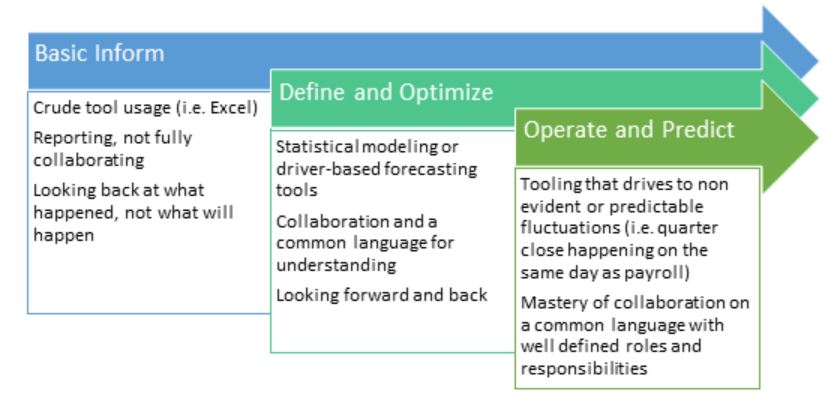More and more, we are talking to clients about the “surprise” of cloud costs. Organizations are constantly shocked by the cloud service provider’s (CSP) bill. Procurement and Information Technology scramble to understand why the bill is high. Finance scrambles to understand how to record every item to maximize CapEx and OpEx. Once this exercise is over, the following month is a rinse and repeat.
Financial Operations (FinOps) is a path to cloud fiscal maturity. This path will be travelled to some degree by all companies that move to the cloud, due to the nature of the consumption model of cloud services and the empowering of developers and cloud engineers to “spend” money on infrastructure without oversight from procurement. Anyone with appropriate access can spin up a service and start spending money, which is traditionally hard to forecast. Procurement has lost the power to negotiate these buys based on bulk. Finance has lost the visibility and ability to forecast upcoming technology buys. This leaves everyone confused and frustrated. To make things worse, cloud is starting to be seen as an expense rather than an enabler. It is imperative the organization progresses the maturity of cloud financial operations to maximize and realize cloud benefits.
When moving to the cloud an important question to ask is why. If a company tells us they are moving for cost savings, then we have to have a real conversation. There are scenarios where technology costs go down, but this isn’t always the case. While cloud provides a more agile way to spend a technology budget, it does not necessarily represent a cheaper way to operate.
Gartner’s 5 Rs
In an on-prem world when IT is asked for a project, they rarely share servers or virtual machines (VMs). They are isolated for vendor specifications and avoiding cross-application resource drain. As well, IT must forecast device utilization for three to five years, depending on the depreciation schedule. This can lead to underutilized devices in the data center and when the move to cloud happens, in a lift and shift fashion, it results in overspending on cloud resources. Therefore, most CSPs have adopted some version of Gartner’s 5 Rs model.
The majority of Gartner’s 5 Rs are often ignored for speed of migration which commits the organization to a rehosting model. How a company moves into the cloud has short- and long-term cost implications. For instance, if an application VM is moved before the database server there are network egress charges that may come as a surprise. Once in the cloud, any over capacity is expensive and often shocking.
Three stages of FinOps maturity: basic, defined, operate
This is where we see FinOps maturity begin to surface. After the shock and finger pointing has passed, very crude roles and forecasting tools begin to form. The roles that form tend to be for defensive posturing to show diligence in cloud spend. The “tool” is generally a very macro-enabled spreadsheet to gain visibility and then address any anomalies after the fact, like a spike in spend. It is also important to note that, at this stage, the company is only looking in the rearview mirror of what has been bought and used, not what will happen in the future. This is the basic stage and focuses on the business just trying to establish an accurate cost of cloud expenditure.
Following the basic stage comes the defined stage, which generally includes a center of excellence where IT, finance and procurement meet weekly. IT has a checkpoint, often an architectural review team which previews and predicts cloud spend, which can then be shared with procurement and finance. Finance, at this point, will have a built or bought a tool that uses statistical modeling or driver-based forecasting such as Apptio’s CloudAbility product. Procurement now knows to ask questions like “how long will that service live?” to allow for intelligent buys like reserved instances or spot buys. The progression and learnings from stage to stage, where possible, get documented in governance and/or architectural guidance.

The final stage involves forecasting via a strong Cloud Centre of Excellence (CCOE) using tools that incorporate predictive analytics and machine learning, allowing time for negotiations and potential funding from the respective CSP. Finance sees usage from a honed-in enterprise project management system (or CMDB) down to the resources and usage for allocating OpEx and CapEx. Procurement understands they are buying and funding options and leverages them based on what is to come. IT architects bring time and resource needs. All groups talk regularly, using a common FinOps language. CSP partnerships are managed in a mature fashion ensuring full discounts and access to innovation/migration funding is sought.
In this final stage, the organization can start to accurately track cost optimization maturity in a unit economics manner. Cloud unit economics is the linking of cloud spend to a unit of value to the business. For example, consider an ecommerce business selling footwear. The goal of FinOps is to help demonstrate how cloud is delivering value to the bottom line, so the unit economics in this example would be $n cloud spend for every sale of a pair of trainers through the website. This allows a mature discussion around how technology is enabling the business rather than draining the business of its margin and profits.
Suppose it costs $5 of cloud spend to sell a pair of trainers; the FinOps cycle could set the goal of reducing that figure from $5 to $3.50. This demonstrates optimization and efficient use of cloud technologies. The interesting thing to consider here is that, while the overall cloud costs may have gone up over the period of time where the unit economics have dropped to $3.50, optimization is the goal — not reduction of the overall bill. If the unit economics figures rise as well as the total cloud bill, then this is a warning sign that cloud changes are potentially poorly aligned with business value.
A strategy of moving to the cloud that is not cost savings motivated helps companies understand how to move. A proper cloud strategy should outline the unit economics to be pursued (per production workload ideally) and set expectations through a proper organization change management process. The cloud strategy should preset pricing expectations in terms of the target cloud unit economics figures. A cloud strategy should also encompass setting up governance, processes, reporting, establish a team or center of excellence and cloud architectural review board to get ahead of excessive spend and maximize the investment the company is undertaking.
Remember, cloud is a powerful enabler, but it is delivered via a consumption commercial model so a high maturity around financial operations needs to be a core aspect of any cultural/op model development. FinOps is the act of communicating technology value to the business — it moves the conversation from a cost discussion to an enabling one.
Protiviti can develop an in house FinOps center of excellence or provide a FinOps managed service to accelerate maturity and intended outcomes.
To learn more about Protiviti’s cloud solutions, contact us.





